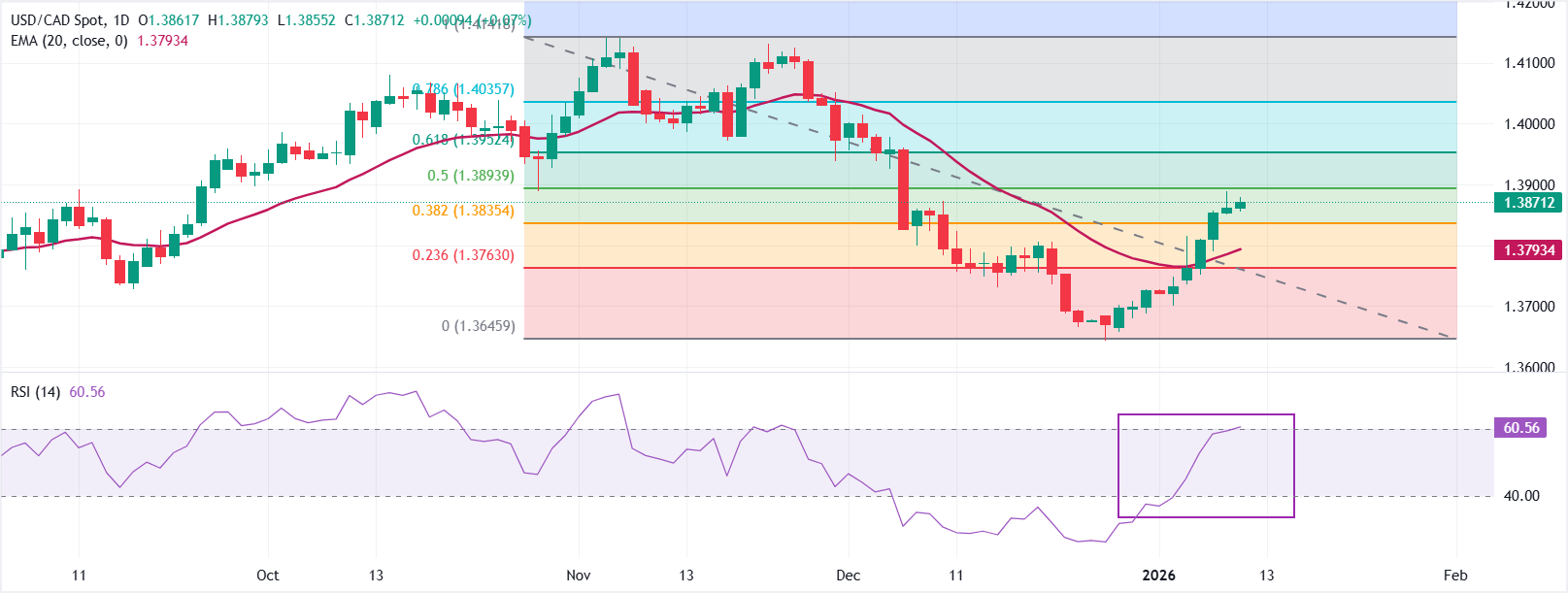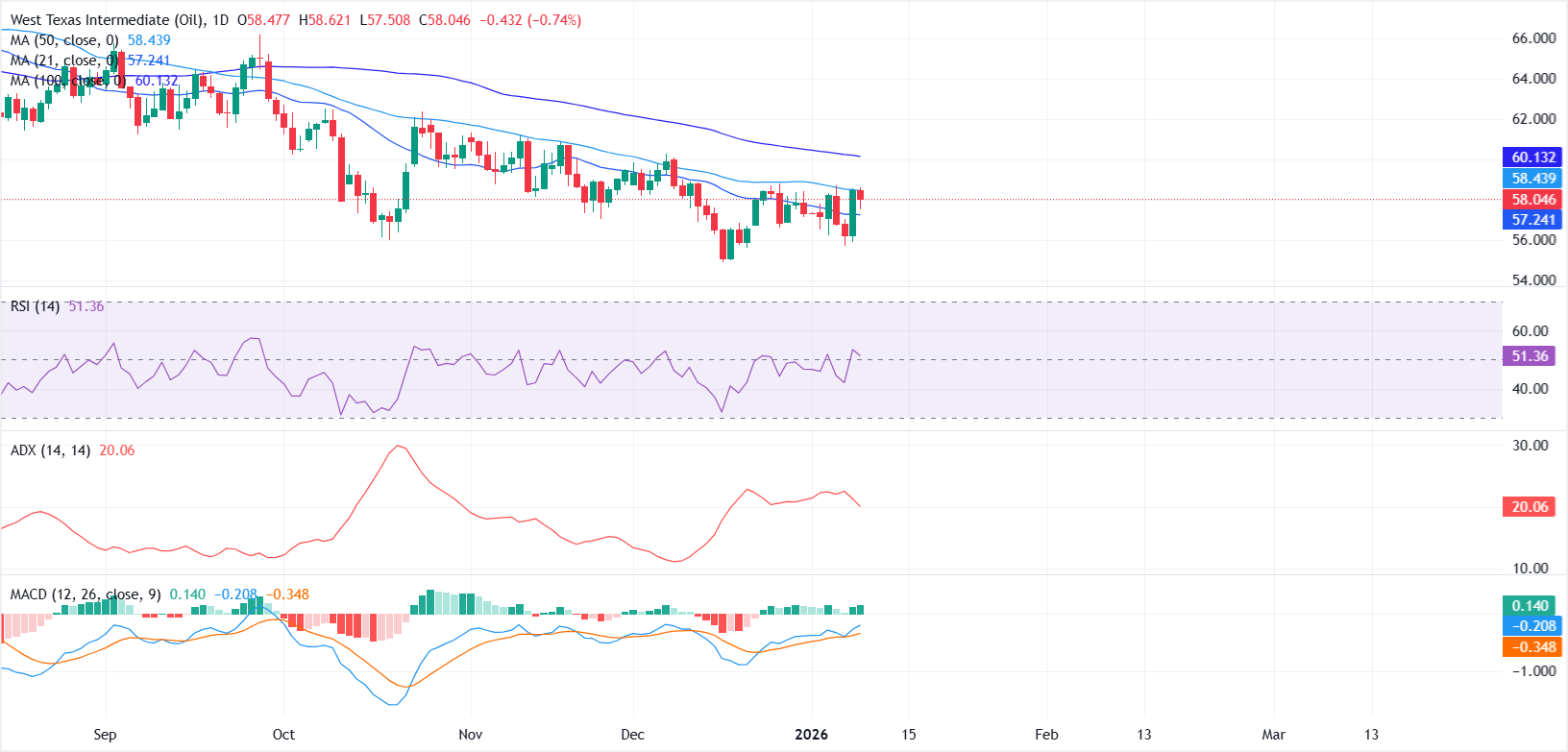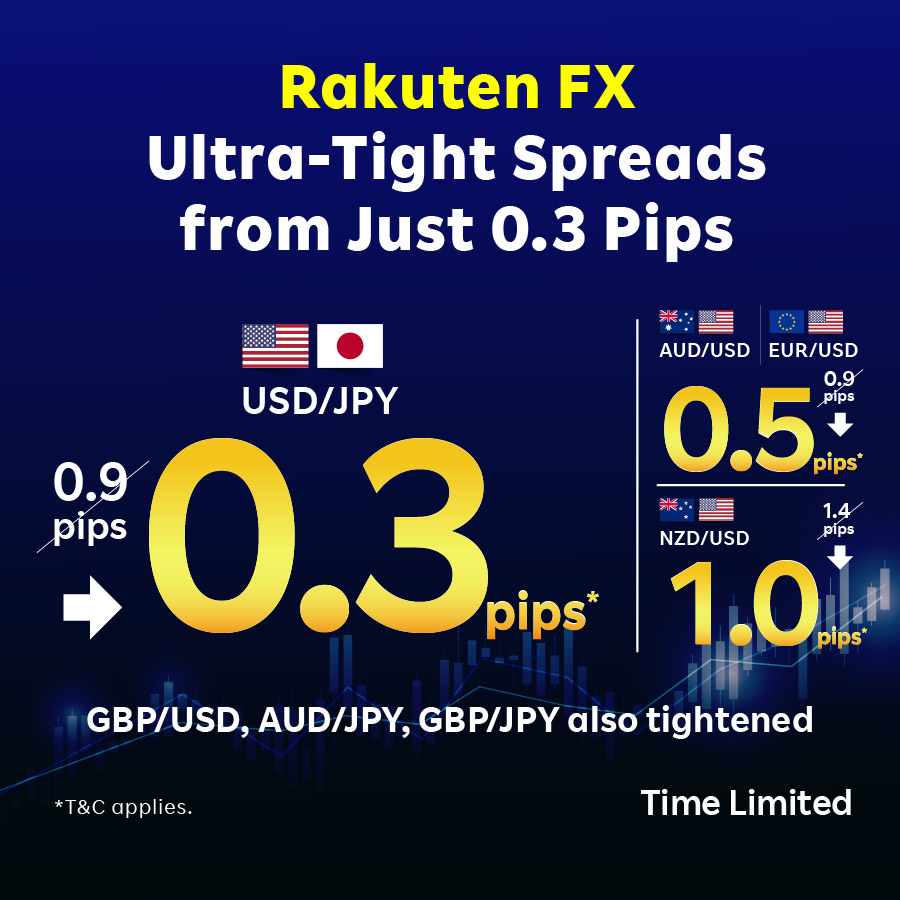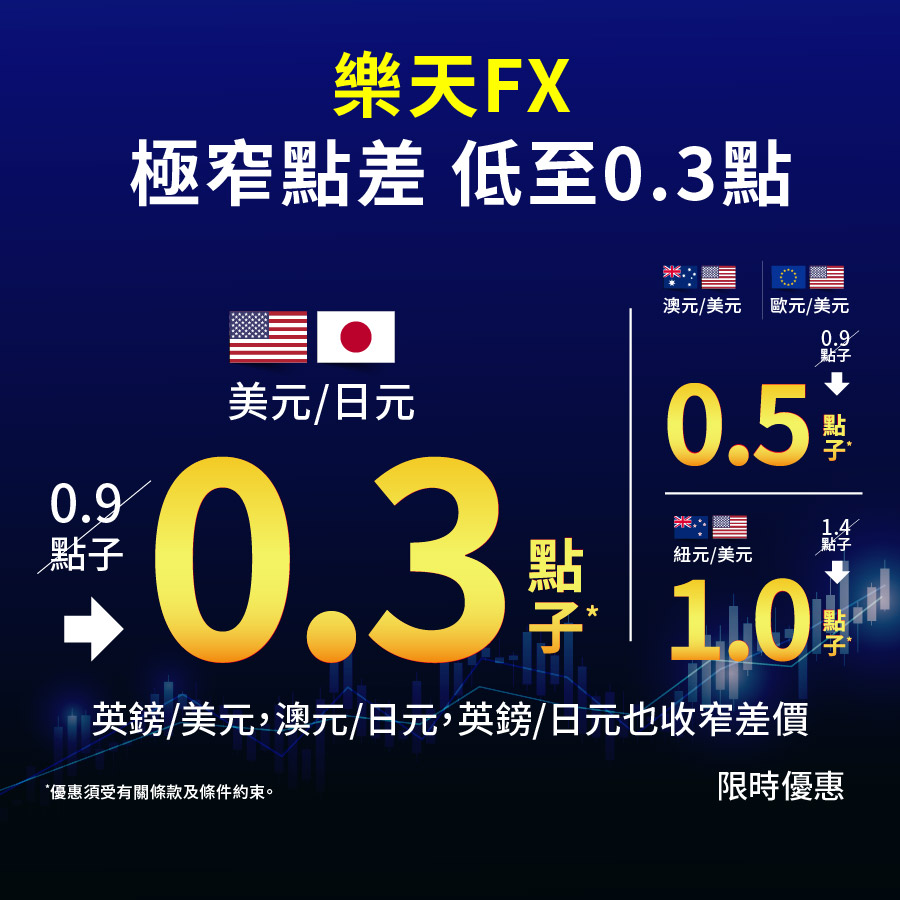Forex News

- EUR/GBP cross trades without a clear direction on Friday.
- Mixed German figures and uneven Eurozone Retail Sales limit support for the single currency.
- Investors remain cautious ahead of UK employment data, a key driver for the British monetary policy outlook.
EUR/GBP trades around 0.8670 on Friday at the time of writing, virtually unchanged on the day, after failing to establish itself above 0.8690 on Thursday. The pair remains under short-term bearish pressure, with a weekly decline of nearly 0.3% and a drop of about 1.5% from the mid-November highs above 0.8800.
On the Eurozone side, macroeconomic data released in Germany provide only limited support to the Euro (EUR). Industrial Production rose by 0.8% in November, following a 2.0% increase in the previous month, beating market expectations for a decline. However, the trade balance deteriorated sharply, with the surplus narrowing to €13.1 billion from €16.9 billion in October, weighed down by a 2.5% fall in exports. This mixed picture revives concerns about the strength of the recovery in the Eurozone’s largest economy.
At the regional level, Eurozone Retail Sales rose by 2.3% YoY in November, above expectations, but the positive surprise fails to spark a sustained rebound in the Euro. Investors judge that these figures are not strong enough to alter expectations for the European Central Bank’s (ECB) monetary policy, which is still seen as being in a prolonged wait-and-see mode.
On the UK side, the macroeconomic calendar remains light, contributing to subdued moves in the Pound Sterling (GBP). The British currency nevertheless stays on the defensive after the downward revision to the S&P Global Services Purchasing Managers Index (PMI) earlier this week, which has fueled concerns about slowing growth amid still-elevated inflation. This policy dilemma complicates the task of the Bank of England (BoE) and, for now, prevents a deeper decline in the euro-pound pair.
Market focus now shifts to UK employment data, due on Monday. Developments in the labor market will be crucial in refining expectations for the Bank of England’s policy path, after the central bank recently signaled that any easing would follow a very gradual trajectory. In this environment of uncertainty and mixed macro signals, EUR/GBP is likely to continue trading without a clear short-term trend.
Euro Price Today
The table below shows the percentage change of Euro (EUR) against listed major currencies today. Euro was the strongest against the Japanese Yen.
| USD | EUR | GBP | JPY | CAD | AUD | NZD | CHF | |
|---|---|---|---|---|---|---|---|---|
| USD | 0.03% | 0.00% | 0.31% | 0.11% | 0.13% | 0.23% | -0.01% | |
| EUR | -0.03% | -0.03% | 0.28% | 0.08% | 0.09% | 0.19% | -0.04% | |
| GBP | -0.01% | 0.03% | 0.32% | 0.11% | 0.13% | 0.22% | -0.02% | |
| JPY | -0.31% | -0.28% | -0.32% | -0.20% | -0.19% | -0.10% | -0.33% | |
| CAD | -0.11% | -0.08% | -0.11% | 0.20% | 0.01% | 0.10% | -0.12% | |
| AUD | -0.13% | -0.09% | -0.13% | 0.19% | -0.01% | 0.09% | -0.14% | |
| NZD | -0.23% | -0.19% | -0.22% | 0.10% | -0.10% | -0.09% | -0.23% | |
| CHF | 0.00% | 0.04% | 0.02% | 0.33% | 0.12% | 0.14% | 0.23% |
The heat map shows percentage changes of major currencies against each other. The base currency is picked from the left column, while the quote currency is picked from the top row. For example, if you pick the Euro from the left column and move along the horizontal line to the US Dollar, the percentage change displayed in the box will represent EUR (base)/USD (quote).

- The Unemployment Rate in Canada rose at a faster pace than expected in December.
- USD/CAD continues to trade in a tight range below 1.3900.
The Unemployment Rate in Canada rose to 6.8% in December from 6.5% in November, the data published by Statistics Canada showed on Friday. This reading came in worse than the market expectation of 6.6%. On a monthly basis, the Net Change in Employment was +8.2K, compared to analysts' estimate of -5K.
In this period, Average Hourly Wages rose by 3.7% on a yearly basis, compared to 4% in November, while the Participation Rate rose to 65.4% from 65.1%.
Market reaction to Canada employment data
These data failed to trigger a noticeable market reaction. At the time of press, USD/CAD was virtually unchanged on the day at 1.3868.
This section below was published as a preview of the Canada employment data at 11:19 GMT.
Canada Employment Overview
The Canadian labour market data for December is due for release today at 13:30 GMT. Statistics Canada is expected to show that there was a reduction in the labor force as 5K workers were fired, against hiring of 53.6K job-seekers in November. The Unemployment Rate is seen rising to 6.6% from the prior release of 6.5%.
Signs of a slowdown in the job market are expected to be unfavorable for the Canadian Dollar (CAD), as they could boost the need of interest rate cuts by the Bank of Canada (BoC) in the near term. The Canadian central bank held interest rates steady at 2.25% in its last two monetary policy meetings and stated that the current policy is appropriate to keep inflation close to the 2% target, while supporting the economy through this period of structural adjustment.
Apart from the job data, investors will also focus on Average Hourly Wages data, a key measure of wage growth. The wage growth measure rose at an annualized pace of 4% in November.
How could the Canadian employment data affect USD/CAD?

USD/CAD extends its two-week-long rally to near 1.3871 on Friday ahead of the US NFP data release. The 20-day Exponential Moving Average (EMA) has turned higher to 1.3793, and the pair holds above it, preserving a near-term bullish bias.
The 14-day Relative Strength Index (RSI) at 60 (bullish) confirms improving momentum without overbought pressure.
Measured from the 1.4142 high to the 1.3646 low, the pair has risen to near the 50% Fibonacci retracement at 1.3894. A daily close above the same would extend the rebound toward the 61.8% Fibonacci retracement at 1.3952. On the contrary, the upside bias could fizzle out if it failed to break above 1.3894, which might lead to a correction toward the 23.6% Fibonacci retracement at 1.3763.
(The technical analysis of this story was written with the help of an AI tool.)
Employment FAQs
Labor market conditions are a key element to assess the health of an economy and thus a key driver for currency valuation. High employment, or low unemployment, has positive implications for consumer spending and thus economic growth, boosting the value of the local currency. Moreover, a very tight labor market – a situation in which there is a shortage of workers to fill open positions – can also have implications on inflation levels and thus monetary policy as low labor supply and high demand leads to higher wages.
The pace at which salaries are growing in an economy is key for policymakers. High wage growth means that households have more money to spend, usually leading to price increases in consumer goods. In contrast to more volatile sources of inflation such as energy prices, wage growth is seen as a key component of underlying and persisting inflation as salary increases are unlikely to be undone. Central banks around the world pay close attention to wage growth data when deciding on monetary policy.
The weight that each central bank assigns to labor market conditions depends on its objectives. Some central banks explicitly have mandates related to the labor market beyond controlling inflation levels. The US Federal Reserve (Fed), for example, has the dual mandate of promoting maximum employment and stable prices. Meanwhile, the European Central Bank’s (ECB) sole mandate is to keep inflation under control. Still, and despite whatever mandates they have, labor market conditions are an important factor for policymakers given its significance as a gauge of the health of the economy and their direct relationship to inflation.

Nonfarm Payrolls (NFP) in the United States (US) rose by 50,000 in December, the US Bureau of Labor Statistics (BLS) reported on Friday. This reading followed November's 56,000 (revised from 64,000) and came in below the market expectation for an increase of 60,000.
Join our live coverage of the US NFP data and the market reaction.
Other details of the report showed that the Unemployment Rate declined to 4.4% from 4.6% in November, while the Labor Force Participation Rate edged lower to 62.4% from 62.5%. Finally, the annual wage inflation, as measured by the change in the Average Hourly Earnings, climbed to 3.8% from 3.6%.
"The change in total nonfarm payroll employment for October was revised down by 68,000, from -105,000 to -173,000, and the change for November was revised down by 8,000, from +64,000 to +56,000," the BLS noted in its press release. "With these revisions, employment in October and November combined is 76,000 lower than previously reported."
Market reaction to US Nonfarm Payrolls data
The US Dollar (USD) Index retreated slightly from session highs following the December employment report and was last seen rising 0.15% on the day at 98.98.
US Dollar Price This week
The table below shows the percentage change of US Dollar (USD) against listed major currencies this week. US Dollar was the strongest against the Canadian Dollar.
| USD | EUR | GBP | JPY | CAD | AUD | NZD | CHF | |
|---|---|---|---|---|---|---|---|---|
| USD | 0.65% | 0.21% | 0.46% | 0.97% | -0.15% | 0.48% | 0.91% | |
| EUR | -0.65% | -0.44% | -0.17% | 0.31% | -0.79% | -0.17% | 0.26% | |
| GBP | -0.21% | 0.44% | 0.13% | 0.76% | -0.36% | 0.27% | 0.69% | |
| JPY | -0.46% | 0.17% | -0.13% | 0.51% | -0.61% | 0.02% | 0.49% | |
| CAD | -0.97% | -0.31% | -0.76% | -0.51% | -0.96% | -0.49% | -0.06% | |
| AUD | 0.15% | 0.79% | 0.36% | 0.61% | 0.96% | 0.63% | 1.06% | |
| NZD | -0.48% | 0.17% | -0.27% | -0.02% | 0.49% | -0.63% | 0.43% | |
| CHF | -0.91% | -0.26% | -0.69% | -0.49% | 0.06% | -1.06% | -0.43% |
The heat map shows percentage changes of major currencies against each other. The base currency is picked from the left column, while the quote currency is picked from the top row. For example, if you pick the US Dollar from the left column and move along the horizontal line to the Japanese Yen, the percentage change displayed in the box will represent USD (base)/JPY (quote).
This section below was published as a preview of the US Nonfarm Payrolls data at 05:00 GMT.
- Nonfarm Payrolls are expected to rise by 60,000 in December after the 64,000 increase recorded in November.
- The Unemployment Rate is seen edging lower to 4.5% from 4.6%.
- The labor market data could influence the market pricing of the Fed’s policy outlook.
The United States (US) Bureau of Labor Statistics (BLS) will release the Nonfarm Payrolls (NFP) data for December on Friday at 13:30 GMT.
The US Dollar (USD) will likely experience heightened volatility as the employment report could provide key clues about how the Federal Reserve (Fed) will approach policy-making in the new year.
What to expect from the next Nonfarm Payrolls report?
Economists expect Nonfarm Payrolls to rise by 60,000 in December following the 64,000 increase recorded in November. In this period, the Unemployment Rate is seen edging lower to 4.5% from 4.6%, while the annual wage inflation, as measured by the change in the average hourly earnings, is forecast to tick up to 3.6% from 3.5%.
The monthly report published by the Automatic Data Processing (ADP) showed that private sector payrolls rose by 41,000 in December following the 29,000 decline recorded in November. Additionally, the Employment Index of the Institute for Supply Management’s Services Purchasing Managers’ Index (PMI) climbed to 52 after staying in contraction territory, below 50, for six consecutive months.
Previewing the employment report, TD Securities analysts said: “We look for job gains to stabilize at around the 50k mark over the last two months, with private payrolls printing a 50k gain in December as the government likely shed 10k jobs over the same period.”
“We also expect the unemployment rate to normalize to 4.5% after seeing a shutdown-driven jump to 4.6% in November. Avg. hourly earnings likely rose 0.3% m/m and 3.6% y/y,” they added.
How will the US December Nonfarm Payrolls data affect EUR/USD?
The US Dollar ended the year on a bullish note and kept its footing to begin 2026. Although the Fed adopted a dovish stance at the December policy meeting, market participants see a strong chance of the US central bank to hold the interest rate unchanged at the January meeting. According to the CME FedWatch Tool, investors are currently pricing in a less than 15% chance of a 25 basis points rate cut this month.
Nevertheless, the employment data could still influence the odds of a rate cut in March, which currently stands around 45%, and trigger a significant market reaction.
Earlier in the week, Richmond Federal Reserve Bank President Thomas Barkin said rate decisions will need to be "finely tuned," given risks to both unemployment and inflation goals. Barkin noted that the unemployment remains low, but added that they don’t want the job market to deteriorate further. Meanwhile, Minneapolis Fed President Neel Kashkari said that the job market is clearly cooling and added there is a risk the Unemployment Rate can “pop from here.”
Rabobank analysts note that the market will be looking to fine-tune its expectations regarding the timing of the next Fed rate cut.
“Currently, the consensus expects steady policy to be maintained this month. Indeed, in view of the split within the FOMC, market pricing suggests risk of steady policy potentially into the spring. A soft payrolls report this week would undermine the USD. That said, we would expect the USD to again exhibit safe haven behaviour this year meaning the potential of support for the greenback. On balance, choppy trading seems likely as the market digests this year’s various events,” they explain.
A significant upside surprise in NFP, with a reading above 80,000, combined with a drop in the Unemployment Rate, could cause investors to lean toward another policy hold in March and boost the USD with the immediate reaction. In this scenario, EUR/USD could come under heavy bearish pressure heading into the weekend. Conversely, a disappointing NFP print of 30,000 or less could trigger a USD sell-off and allow EUR/USD to turn north.
Eren Sengezer, European Session Lead Analyst at FXStreet, offers a brief technical outlook for EUR/USD:
“The Relative Strength Index (RSI) indicator on the daily chart dropped below 50 for the first time since late November and EUR/USD closed below the 20-day SMA for four consecutive days, reflecting a buildup of bearish pressure. In case the pair drops below the 100-day Simple Moving Average (SMA), currently located at 1.1665, and confirms that level as resistance, technical sellers could remain interested. In this scenario, 1.1600 (round level) could be seen as an interim support level before 1.1560 (200-day SMA).”
“On the upside, 1.1740 (20-day SMA) acts as dynamic resistance. If EUR/USD manages to stabilize above this level, it could gather recovery momentum and target 1.1800 (static level, round level), followed by 1.1870 (static level).”
Nonfarm Payrolls FAQs
Nonfarm Payrolls (NFP) are part of the US Bureau of Labor Statistics monthly jobs report. The Nonfarm Payrolls component specifically measures the change in the number of people employed in the US during the previous month, excluding the farming industry.
The Nonfarm Payrolls figure can influence the decisions of the Federal Reserve by providing a measure of how successfully the Fed is meeting its mandate of fostering full employment and 2% inflation. A relatively high NFP figure means more people are in employment, earning more money and therefore probably spending more. A relatively low Nonfarm Payrolls’ result, on the either hand, could mean people are struggling to find work. The Fed will typically raise interest rates to combat high inflation triggered by low unemployment, and lower them to stimulate a stagnant labor market.
Nonfarm Payrolls generally have a positive correlation with the US Dollar. This means when payrolls’ figures come out higher-than-expected the USD tends to rally and vice versa when they are lower. NFPs influence the US Dollar by virtue of their impact on inflation, monetary policy expectations and interest rates. A higher NFP usually means the Federal Reserve will be more tight in its monetary policy, supporting the USD.
Nonfarm Payrolls are generally negatively-correlated with the price of Gold. This means a higher-than-expected payrolls’ figure will have a depressing effect on the Gold price and vice versa. Higher NFP generally has a positive effect on the value of the USD, and like most major commodities Gold is priced in US Dollars. If the USD gains in value, therefore, it requires less Dollars to buy an ounce of Gold. Also, higher interest rates (typically helped higher NFPs) also lessen the attractiveness of Gold as an investment compared to staying in cash, where the money will at least earn interest.
Nonfarm Payrolls is only one component within a bigger jobs report and it can be overshadowed by the other components. At times, when NFP come out higher-than-forecast, but the Average Weekly Earnings is lower than expected, the market has ignored the potentially inflationary effect of the headline result and interpreted the fall in earnings as deflationary. The Participation Rate and the Average Weekly Hours components can also influence the market reaction, but only in seldom events like the “Great Resignation” or the Global Financial Crisis.

- WTI eases on Friday after rallying nearly 4% the previous day as markets reassess US oversight of Venezuelan Oil.
- US President Donald Trump signals potential $100 billion investment in Venezuela’s Oil sector, reviving oversupply concerns.
- Technically, near-term momentum improves, but the longer-term trend remains fragile.
West Texas Intermediate (WTI) trades with a negative bias on Friday after posting solid gains the previous day, as traders continue to assess the implications of increased US oversight of Venezuelan Oil following recent military action in Caracas. At the time of writing, WTI trades around $58.00, easing after climbing nearly 4% on Thursday.
US involvement could eventually unlock Venezuela’s vast Oil reserves and add to an already oversupplied market. US President Donald Trump is set to meet with Oil executives at the White House later on Friday. Trump wrote on Truth Social that “at least $100 billion” could be invested by major US Oil firms in rebuilding Venezuelan Oil infrastructure.

From a technical perspective, WTI’s near-term outlook steadies as the daily chart shows price reclaiming the 21-day Simple Moving Average (SMA), while the Relative Strength Index (RSI) has climbed back above the 50 threshold, signalling improving short-term momentum. However, the broader structure remains bearish, with longer-term moving averages still capping upside attempts.
The 50-day SMA near $58.34 is acting as immediate resistance. A decisive daily close above this area could open the door toward the 100-day SMA near $60.13, although sellers are likely to re-emerge given repeated rejections from the $60.00 psychological level.
On the downside, the rising 21-day SMA around $57.24 provides initial support, followed by the $56.00 zone, where buying interest has emerged.
The Moving Average Convergence Divergence (MACD) line holds above the signal line near the zero mark, with the histogram widening in positive territory, pointing to strengthening bullish momentum. Meanwhile, the Average Directional Index (ADX) hovering near 20 suggests the broader trend remains weak, highlighting the risk of continued choppy price action.
WTI Oil FAQs
WTI Oil is a type of Crude Oil sold on international markets. The WTI stands for West Texas Intermediate, one of three major types including Brent and Dubai Crude. WTI is also referred to as “light” and “sweet” because of its relatively low gravity and sulfur content respectively. It is considered a high quality Oil that is easily refined. It is sourced in the United States and distributed via the Cushing hub, which is considered “The Pipeline Crossroads of the World”. It is a benchmark for the Oil market and WTI price is frequently quoted in the media.
Like all assets, supply and demand are the key drivers of WTI Oil price. As such, global growth can be a driver of increased demand and vice versa for weak global growth. Political instability, wars, and sanctions can disrupt supply and impact prices. The decisions of OPEC, a group of major Oil-producing countries, is another key driver of price. The value of the US Dollar influences the price of WTI Crude Oil, since Oil is predominantly traded in US Dollars, thus a weaker US Dollar can make Oil more affordable and vice versa.
The weekly Oil inventory reports published by the American Petroleum Institute (API) and the Energy Information Agency (EIA) impact the price of WTI Oil. Changes in inventories reflect fluctuating supply and demand. If the data shows a drop in inventories it can indicate increased demand, pushing up Oil price. Higher inventories can reflect increased supply, pushing down prices. API’s report is published every Tuesday and EIA’s the day after. Their results are usually similar, falling within 1% of each other 75% of the time. The EIA data is considered more reliable, since it is a government agency.
OPEC (Organization of the Petroleum Exporting Countries) is a group of 12 Oil-producing nations who collectively decide production quotas for member countries at twice-yearly meetings. Their decisions often impact WTI Oil prices. When OPEC decides to lower quotas, it can tighten supply, pushing up Oil prices. When OPEC increases production, it has the opposite effect. OPEC+ refers to an expanded group that includes ten extra non-OPEC members, the most notable of which is Russia.
Forex Market News
Our dedicated focus on forex news and insights empowers you to capitalise on investment opportunities in the dynamic FX market. The forex landscape is ever-evolving, characterised by continuous exchange rate fluctuations shaped by vast influential factors. From economic data releases to geopolitical developments, these events can sway market sentiment and drive substantial movements in currency valuations.
At Rakuten Securities Hong Kong, we prioritise delivering timely and accurate forex news updates sourced from reputable platforms like FXStreet. This ensures you stay informed about crucial market developments, enabling informed decision-making and proactive strategy adjustments. Whether you’re monitoring forex forecasts, analysing trading perspectives, or seeking to capitalise on emerging trends, our comprehensive approach equips you with the insights needed to navigate the FX market effectively.
Stay ahead with our comprehensive forex news coverage, designed to keep you informed and prepared to seize profitable opportunities in the dynamic world of forex trading.








